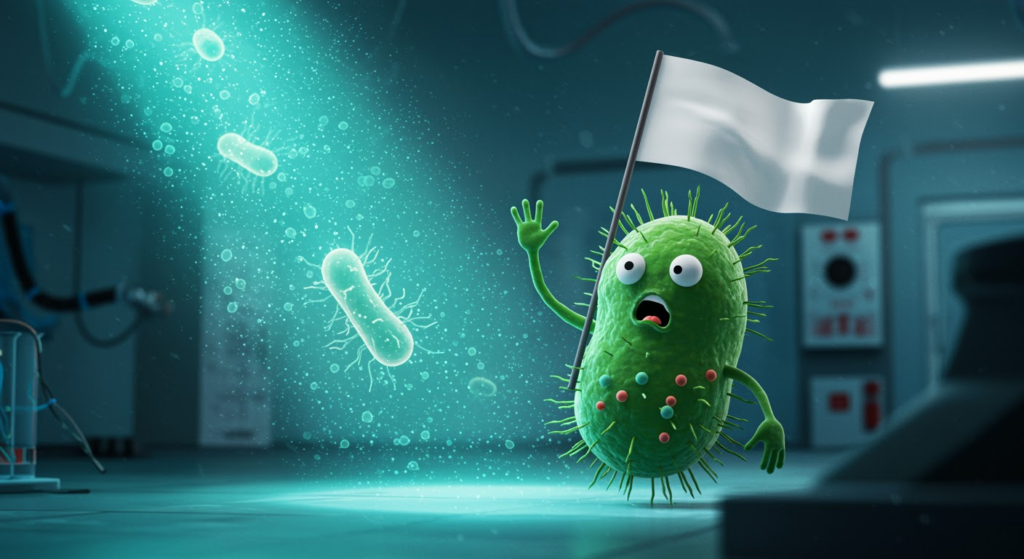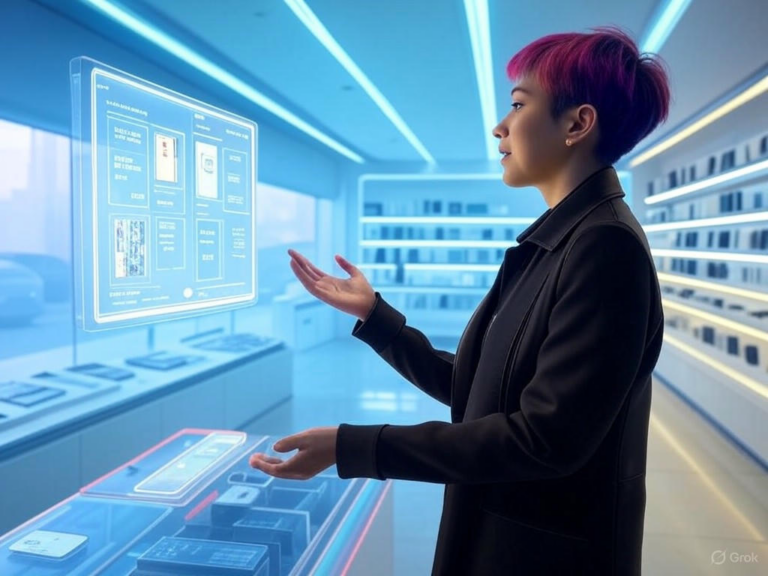
AI Breakthrough Solves Resistant Bacteria Puzzle in Two Days
Revolutionizing Healthcare: How AI Addresses the Antibiotic Resistance Crisis
AI antibiotic resistance is reshaping the way we tackle one of the biggest threats in modern medicine. Imagine infections that once responded to simple treatments now defying our best drugs—it’s a reality that’s putting lives at risk. Thanks to advanced AI models, we’re now decoding bacterial resistance patterns in mere days, paving the way for faster, more targeted therapies that could save millions.
Have you ever wondered how a technology designed for data analysis is becoming a hero in hospitals? AI antibiotic resistance tools are trained on vast datasets, spotting subtle genetic changes in bacteria that make them untreatable. This isn’t just tech talk; it’s a game-changer that’s helping doctors respond quicker and more accurately.
Understanding the Urgency: The Global Threat of Drug-Resistant Bacteria
The World Health Organization (WHO) warns that antibiotic-resistant bacteria could lead to 10 million deaths annually by 2050 if we don’t act fast. These superbugs turn everyday infections like urinary tract issues or pneumonia into potential killers, complicating surgeries and overwhelming healthcare systems. What makes this worse is how bacteria share resistance genes, spreading like wildfire across populations.
Think about a simple cut that becomes a hospital nightmare because standard antibiotics fail. In agriculture, overuse of these drugs in livestock accelerates the problem, creating a chain reaction that affects us all. AI antibiotic resistance innovations are crucial here, offering tools to monitor and mitigate this spread before it’s too late.
Advancements in AI Antibiotic Resistance Detection
Scientists are now using AI to predict antibiotic resistance with speed and precision that’s unprecedented. By feeding algorithms enormous libraries of bacterial genomes, these systems can identify the exact genes or mutations causing resistance, cutting through the complexity that baffles traditional methods. It’s like having a super detective on your side, spotting clues humans might miss.
- Genome-wide analysis: AI scans millions of bacterial sequences to flag resistance markers, turning hours of manual work into minutes.
- Pattern recognition: Machine learning uncovers hidden trends in bacterial evolution, revealing how resistance develops and spreads.
- Rapid diagnostics: What used to take weeks now happens in two days, thanks to AI-powered tools that deliver actionable insights fast.
For instance, consider a patient with a mysterious infection—AI could analyze their sample and pinpoint resistance in record time, allowing for immediate treatment adjustments. This not only improves outcomes but also helps prevent the broader spread of resistant strains in communities.
How AI Outpaces Traditional Methods in Tackling Antibiotic Resistance
Old-school diagnostics often involve growing bacteria in a lab, which is slow and unreliable for emerging threats. AI changes that by examining the entire bacterial genome at once, detecting both familiar and novel resistance mechanisms without needing predefined clues. It’s a leap forward that’s making AI antibiotic resistance a cornerstone of modern healthcare.
| Method | Time to Results | Accuracy | Limitations |
|---|---|---|---|
| Traditional Cultures | Several days to weeks | Varies, can be high | Slow, may miss rare mutations |
| DNA-Based Tests | Hours to days | Good for known markers | Fails with unknown resistance |
| AI-Based Genome Analysis | Within 2 days | High, for known and new mutations | Dependent on computational power and dataset |
This approach means patients get the right treatment sooner, reducing risks like prolonged illness or hospital-acquired infections. If you’re a healthcare professional, imagine how this could streamline your workflow—fewer guesswork-based prescriptions and more data-driven decisions.
The Impact of AI on Antibiotic Resistance Patterns
- AI models dive into genetic data to reveal mutations that enable bacteria to evade drugs.
- They help differentiate treatable infections from those needing alternative strategies.
- Doctors gain quick, reliable insights, enhancing patient care and curbing the rise of superbugs.
A hypothetical scenario: A child with a fever in a rural clinic—AI antibiotic resistance tools could identify if it’s a resistant strain, guiding the doctor to the best option without delay. This level of precision is empowering communities worldwide.
AI’s Expanding Role in Discovering New Antibiotics
Beyond detection, AI is inventing new weapons against antibiotic resistance. At Stanford Medicine, the SyntheMol model generates novel antibiotic candidates, complete with lab-ready instructions, accelerating drug development exponentially. In one study, AI produced dozens of promising molecules that targeted tough bacteria like MRSA.
- These AI-designed drugs showed effectiveness against multidrug-resistant strains, opening up new avenues in chemical innovation.
- Researchers at McMaster University discovered lariocidin, a breakthrough antibiotic that attacks bacteria uniquely, thanks to AI-assisted screening.
- This exploration of “chemical space” could yield hundreds of new options, giving us an edge in the fight against evolving threats.
What if we could predict and create drugs faster than bacteria adapt? That’s the promise of AI antibiotic resistance solutions, making drug discovery more efficient and cost-effective.
Beyond Healthcare: Wider Effects of AI on Antibiotic Resistance
AI’s benefits extend to agriculture and veterinary fields, where antibiotic misuse fuels resistance in animals and crops. By applying these models, we can monitor resistance in farm settings, protecting food chains and preventing cross-species transmission. It’s a holistic approach that safeguards ecosystems and public health.
For example, in poultry farming, AI could detect resistant bacteria early, prompting better practices and reducing overall antibiotic use. This not only helps farmers but also ensures safer food for consumers—proving that AI antibiotic resistance tech is versatile and impactful.
Charting the Future: Overcoming Challenges in AI Antibiotic Resistance Efforts
While progress is exciting, we must address hurdles like data privacy and access to keep AI antibiotic resistance advancing. Continued investment in research is key to refining these tools for everyday use. Experts recommend global collaborations to share genomic data, enabling real-time tracking of resistance trends.
- Early detection of new resistance genes can prevent outbreaks.
- Accelerated testing of AI-suggested drugs speeds up approvals.
- Integrating these systems into clinics ensures they’re practical and user-friendly.
As individuals, staying informed and supporting policies that promote responsible antibiotic use can make a difference. What steps can you take in your daily life to combat this issue?
Conclusion: Embracing a New Era Against Superbugs
AI has turned the tide, solving antibiotic resistance puzzles in just two days and sparking hope for better treatments. From precise diagnostics to innovative drug design, this technology is our ally in a critical battle. As we move forward, let’s commit to ongoing research and collaboration—share your thoughts in the comments below, explore more on our site, or spread the word to raise awareness.
References
- Innovation News Network: AI breakthrough predicts the spread of antibiotic-resistant bacteria
- ScienceDaily: AI improves diagnosis of drug-resistant infections
- Phys.org: New class of antibiotics discovered
- Stanford Medicine: Generative AI develops new drugs for antibiotic-resistant bacteria
- Tulane University: AI improves diagnosis of drug-resistant infections
AI antibiotic resistance, drug-resistant bacteria, machine learning in healthcare, antimicrobial discovery, rapid diagnostics, AI in medicine, antibiotic resistance solutions, bacterial genome analysis, new antibiotics, superbug treatment







